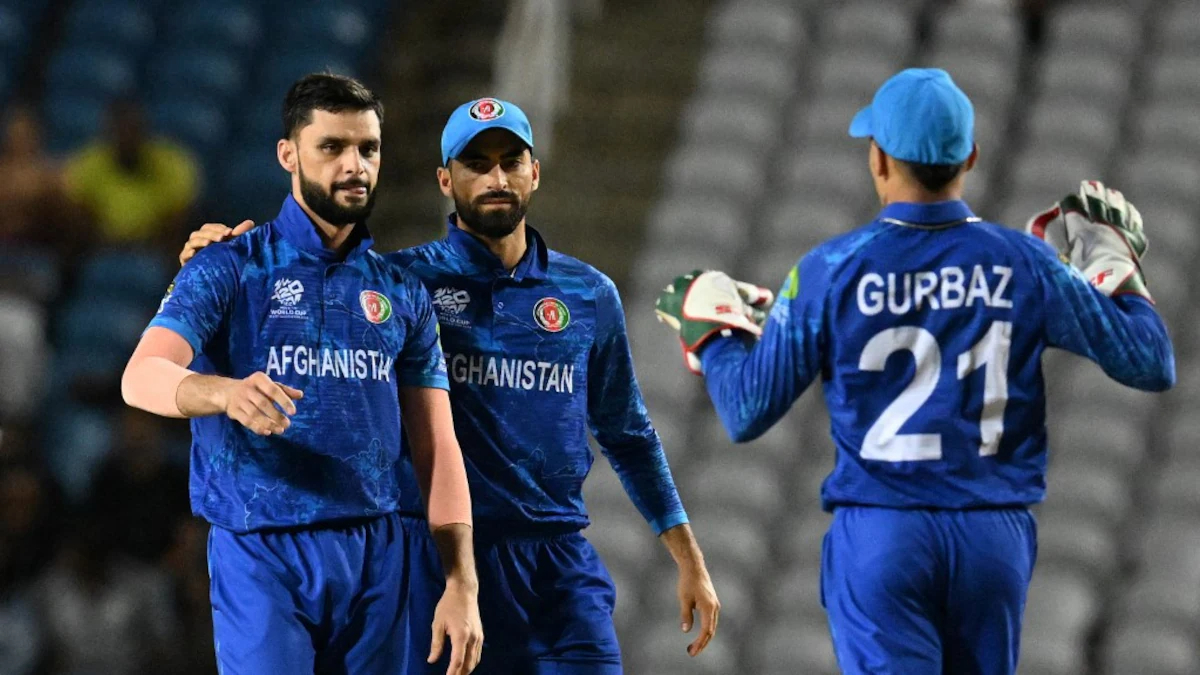Why Afghanistan Chose to Bowl First: A Strategic Insight

In the high-octane world of T20 cricket, the decisions taken at the toss can have a significant impact on the outcome of the match. The clash between West Indies and Afghanistan in the ICC Men’s T20 World Cup 2024 at the Daren Sammy National Stadium in Gros Islet, St Lucia, was no exception. In a game that saw the West Indies achieve a comprehensive 104-run victory, Afghanistan’s decision to bowl first after winning the toss was a critical point of discussion. This article delves deep into the strategic, contextual, and situational factors that might have influenced Afghanistan’s choice, and how it panned out over the course of the match.
Understanding the Context
Before dissecting the decision to bowl first, it’s essential to set the stage with some context about the match and the tournament:
- T20 World Cup 2024 Scenario: Both West Indies and Afghanistan had already qualified for the Super Eight stage. Therefore, the match’s primary significance lay in determining which team would finish at the top of Group C.
- Team Form and Lineups: West Indies introduced Obed McCoy and Shai Hope into their lineup, while Afghanistan fielded an unchanged team.
- Venue Insights: The match took place at the Daren Sammy National Stadium, known for its lively pitch that offers assistance to both pacers and spinners. The weather conditions and the nature of the pitch often play a pivotal role in decision-making at the toss.
The Toss Decision: Why Bowl First?
Winning the toss and opting to bowl first is a decision driven by a multitude of factors, including pitch conditions, team strengths, opposition weaknesses, and strategic preferences. Here’s a detailed analysis of why Afghanistan might have chosen to bowl first:
1. Pitch Conditions and Weather Forecast
The pitch at Daren Sammy National Stadium can be unpredictable, offering variable bounce and some turn for spinners. Captains often prefer to field first to gauge the pitch behavior before setting a target.
- Morning Dew and Early Assistance: If there is dew in the early hours, it can make the pitch slightly damp, offering more grip and movement for bowlers. This can be advantageous for the bowling team initially.
- Assessing Pitch Behavior: Bowling first allows the team to understand how the pitch is playing, which can be crucial in planning the chase. A better reading of the pitch can aid batsmen in setting a more calculated and effective chase.
2. Strengths of the Bowling Attack
Afghanistan has developed a reputation for its strong bowling attack, particularly with spinners who can exploit turn and variations on helpful surfaces. Opting to bowl first could have been a strategy to leverage this strength:
- Spin Dominance: Afghanistan boasts world-class spinners like Rashid Khan and Mujeeb Ur Rahman. These bowlers can be lethal if they get assistance from the pitch early in the match.
- Containing West Indies’ Power Hitters: West Indies’ batting lineup is known for its explosive power hitters like Nicholas Pooran and Johnson Charles. By bowling first, Afghanistan might have aimed to contain these batsmen under favorable bowling conditions and then chase a manageable total.
3. Pressure of Chasing
Chasing a total can sometimes be psychologically less daunting than setting one, particularly in high-stakes matches:
- Defined Target: Having a set target can help batsmen plan their innings better. Knowing exactly what is required allows the chasing team to pace their innings accordingly.
- Pressure Transfer: If Afghanistan managed to restrict West Indies to a modest total, the pressure would transfer to the West Indies bowlers, especially in a do-or-die situation to secure the top spot in the group.
4. Historical and Tactical Precedents
Teams often look at past matches and outcomes to inform their strategies. Historical data and recent trends at the venue might have played a role:
- Successful Chases: If previous matches at the venue have shown that teams batting second have a higher success rate, it would justify Afghanistan’s decision.
- Tournament Trends: Observing the trends in the current tournament, such as how teams have performed when chasing versus setting targets, would also influence the decision-making process.
Execution of the Strategy
After opting to bowl first, the next crucial aspect is the execution of the strategy. Here’s how the match unfolded and how effective Afghanistan’s decision turned out to be:
1. The West Indies’ Explosive Start
West Indies capitalized on the powerplay overs with an aggressive start:
- Nicholas Pooran’s Brilliance: Pooran’s 53-ball 98 was a masterclass in T20 batting. He, along with Johnson Charles, took full advantage of the fielding restrictions, propelling the team to a formidable 92/1 in the powerplay.
- Middle Overs Consolidation: Despite a brief period where Afghanistan spinners managed to put a lid on the scoring rate, Pooran’s onslaught in the latter part of the innings ensured West Indies posted a mammoth total of 218/5.
2. Afghanistan’s Bowling Performance
The decision to bowl first put Afghanistan’s bowlers under significant pressure to deliver:
- Early Wickets but Pooran’s Counterattack: While Afghanistan managed an early breakthrough by dismissing Brendon King, they struggled to contain Pooran and Charles.
- Spinners’ Efforts: Rashid Khan and other spinners did manage to apply some pressure in the middle overs, but it wasn’t enough to prevent West Indies from reaching their highest total in T20 World Cup history.
3. The Chase and Collapse
Chasing 219 was always going to be a daunting task, and Afghanistan’s batting lineup crumbled under the pressure:
- McCoy’s Impact: Obed McCoy, playing his first match of the tournament, wreaked havoc by picking up three crucial wickets, dismantling Afghanistan’s middle order.
- Spinners’ Stranglehold: Akeil Hosein and Gudakesh Motie tightened the noose, bundling Afghanistan out for a paltry 114 in 16.2 overs.
Analyzing the Outcome
In hindsight, Afghanistan’s decision to bowl first did not yield the desired results. However, this doesn’t necessarily mean the decision was flawed. Here are some reflections on the outcome:
1. The Margin for Error
T20 cricket is highly unpredictable, and the margin for error is slim. While Afghanistan’s strategy had merit, the execution on the day wasn’t up to the mark:
- Execution Over Strategy: The plan to contain West Indies with their spinners and then chase might have worked on another day with better execution. The explosive batting by Pooran was a game-changer that Afghanistan’s bowlers couldn’t counter effectively.
2. Lessons Learned
For Afghanistan, the match offered valuable lessons in handling high-pressure situations and executing game plans under duress:
- Handling Big Scores: Understanding how to adapt their bowling strategies when faced with aggressive batting can help in future matches.
- Chasing Big Totals: Developing a more robust approach to chasing big totals, including better intent and resilience in batting, will be crucial.
3. Moving Forward
Looking ahead, Afghanistan can take heart from their overall performance in the tournament and build on the positives:
- Strengthening Tactics: Fine-tuning their tactics and improving execution will be vital as they progress in the Super Eight stage.
- Team Cohesion: Continued focus on team cohesion and leveraging their strengths, especially their potent bowling attack, can help them navigate future challenges.
Conclusion
Afghanistan’s decision to bowl first after winning the toss in their T20 World Cup 2024 match against West Indies was a calculated gamble based on several strategic considerations. While the outcome didn’t favor them, the decision itself was grounded in sound cricketing logic. The aggressive start by West Indies, spearheaded by Nicholas Pooran, and the subsequent collapse of Afghanistan’s batting highlighted the fine margins and unpredictability inherent in T20 cricket.
The match serves as a reminder that while strategy and planning are crucial, execution on the day is equally important. Afghanistan can draw valuable lessons from this experience as they prepare for the Super Eight stage, where adaptability and resilience will be key to their success. As they reflect on this match, focusing on enhancing their game plans and improving execution under pressure will undoubtedly make them a stronger and more formidable team in the future.




